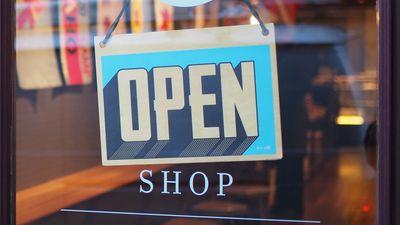Photo by Mike Petrucci on Unsplash
At a recent customer conference — a gathering of dozens of executives of the nation's top food retailers — I opened my keynote by paraphrasing the opening line of "A Tale Of Two Cities": "It's the best of times, it's the worst of times."
I was talking, of course, not about the French Revolution, but the revolution that's afoot in my industry. And unlike Dickens, I was looking at what's happening not in the past but in the present.
I do not subscribe to the view that we are in the middle of a retail apocalypse; rather, I believe this is a retail revolution where the winners and the losers are yet to be determined. While the headlines continue to spook retailers inside and outside the food sector (Sears filed for Chapter 11, while Toys R Us is plotting a comeback), it seems like we are only focused on the worst-of-times/doomsday scenario. The truth: success stories have been obscured in the toss and tumult, and a rulebook for success is emerging. In a nod to another writer about revolutions — Saul Alinsky, author of the infamous Rules For Radicals — I offer seven principles that the best and the brightest retailers are following to weather the storm.
Put The Customer First
In my first column for Forbes, I made the point that "putting the customer first" — what seems like a timeworn cliché — is good for business. In the food retail sector, the main theater of battle in the retail revolution, the virtue of being customer-first is most apparent. This is a revolution where the customer is the victor, and the pressure is on retailers to compete for her. According to our research, she shops on average at four grocery stores each month and regularly buys groceries from at least three other channels. Most important: She has clear opinions about what each store represents in terms of value. Ignore what she thinks and wants at your peril. If you are a food retailer today, you need to start with a data-driven customer strategy.
Don’t Think Just About Price — Think About Value
All great revolutions result in the destruction not just of institutions but old credos as well. Here's one: E-commerce will lead to an inevitable race to the bottom for retailers because they need to compete more and more on price. We recently unveiled research that shows customers are more driven to make decisions as to where they shop based on perceived value, not price, per se. We have a formula: divide quality by price, and that gives you a better idea of what your customer wants, and how to put the customer first. For example, customers happily exchange the time it takes to shop at Costco and Walmart for lower prices — a choice driven by a subconscious cost/benefit analysis of each retailer's value proposition. A recent report by Forrester concludes that price, convenience, assortment and experience are all important to the modern consumer.
Know Your Particular Value-Driven Customer And Adapt Accordingly
Which is not to say that you cannot differentiate more around quality or price to win customer preference. Retailers that are focused more on "fresh" or "organic" might focus more on quality, while big box brands might focus more on price. It's important to note that a study by Business Insider found that discount stores are surging. But the battle for shoppers today mandates you think about both price and quality. By analyzing first customer data — which retailers have access to — retailers can get a better sense of what matters to their customers.
Target Your Investments
In another study, we found that brands with a more homogenous customer and store footprint perform better. Why? Because they deliver a value proposition that is more consistent with their customer's expectations. They opened the most stores in the last 30 years, and as a such, their customers are more homogenous, and they understand their customers — their habits, their biases, and, ultimately, their preferences — better. Again, the best place to start is with tools for analyzing customer data.
Think Intelligently About Private Labels
A growing corpus of research shows that food retailers with their own private label product lines are benefitting not just from brand lift but margins as well. An intelligent private label strategy can significantly improve overall margins. But there should be an emphasis on "intelligent." To make this happen requires more than strategy; it takes a little something called customer data science.
Incorporate Customer Data Science
By that, I mean the data, tools and practitioners that are now available not just to the Amazons of the world but to practically every retailer on the planet. Along with the revolution that is empowering consumers to shop more intelligently, there's the democratization of the science that was limited to just a few businesses visible at the start of the revolution. But to enter the battle you need to equip.
Join The Revolution Now — The Best Of Times
As I said at the start, this is not just the worst of times but the best of times as well. In addition to the democratization of best practices and tools, the relative strength of the economy plays in the favor of large incumbents and new market entrants poised to enter the fray. They may have more cash and other resources to commit today than when the inevitable dip in the economy makes competition for the choice-rich shopper even tougher.
When that time comes, we may actually have a tale of two retailers, not cities: the one that planned for the revolution and the other that did not.
